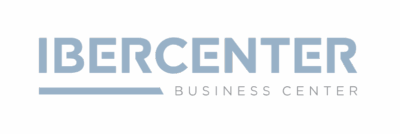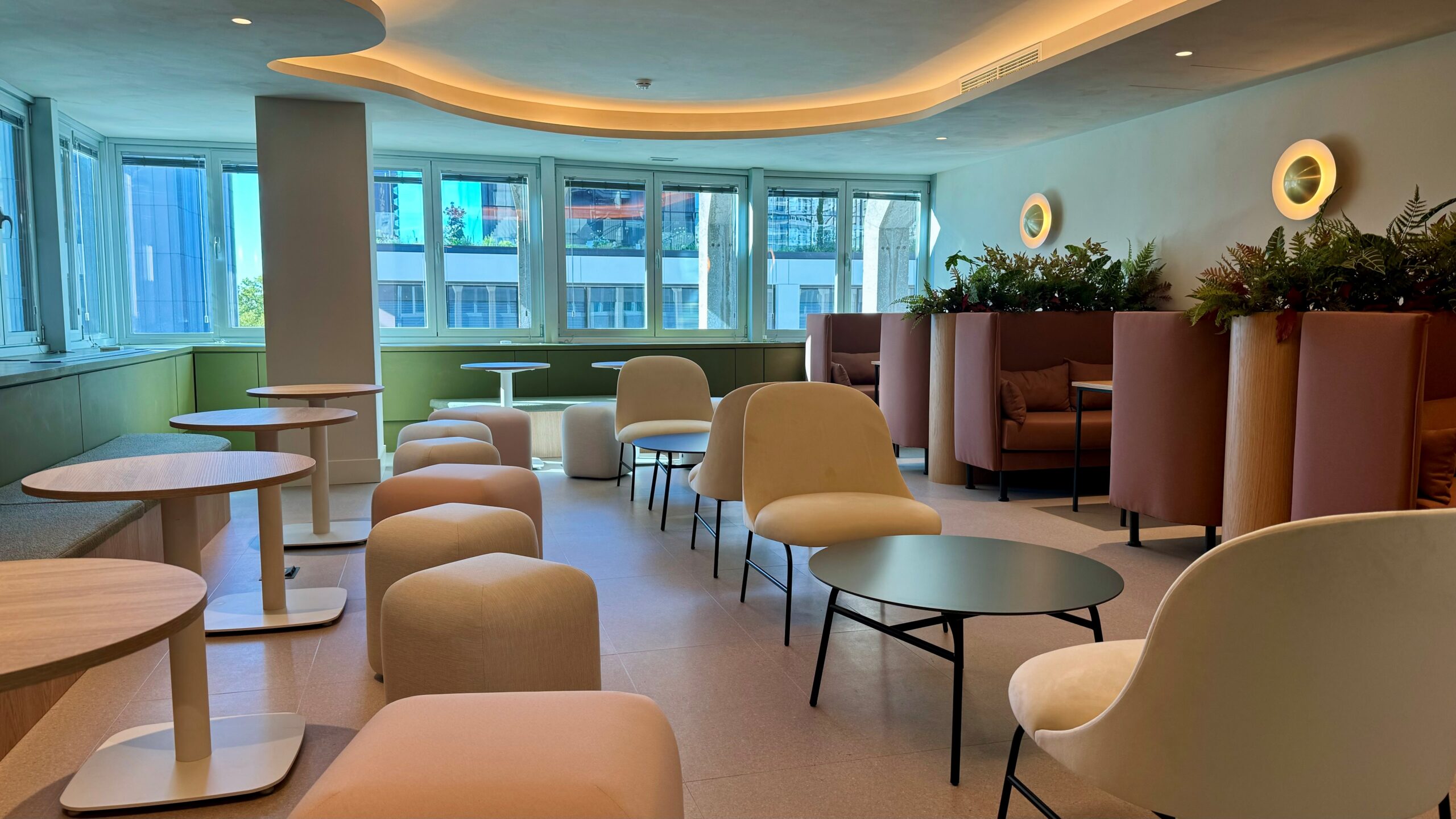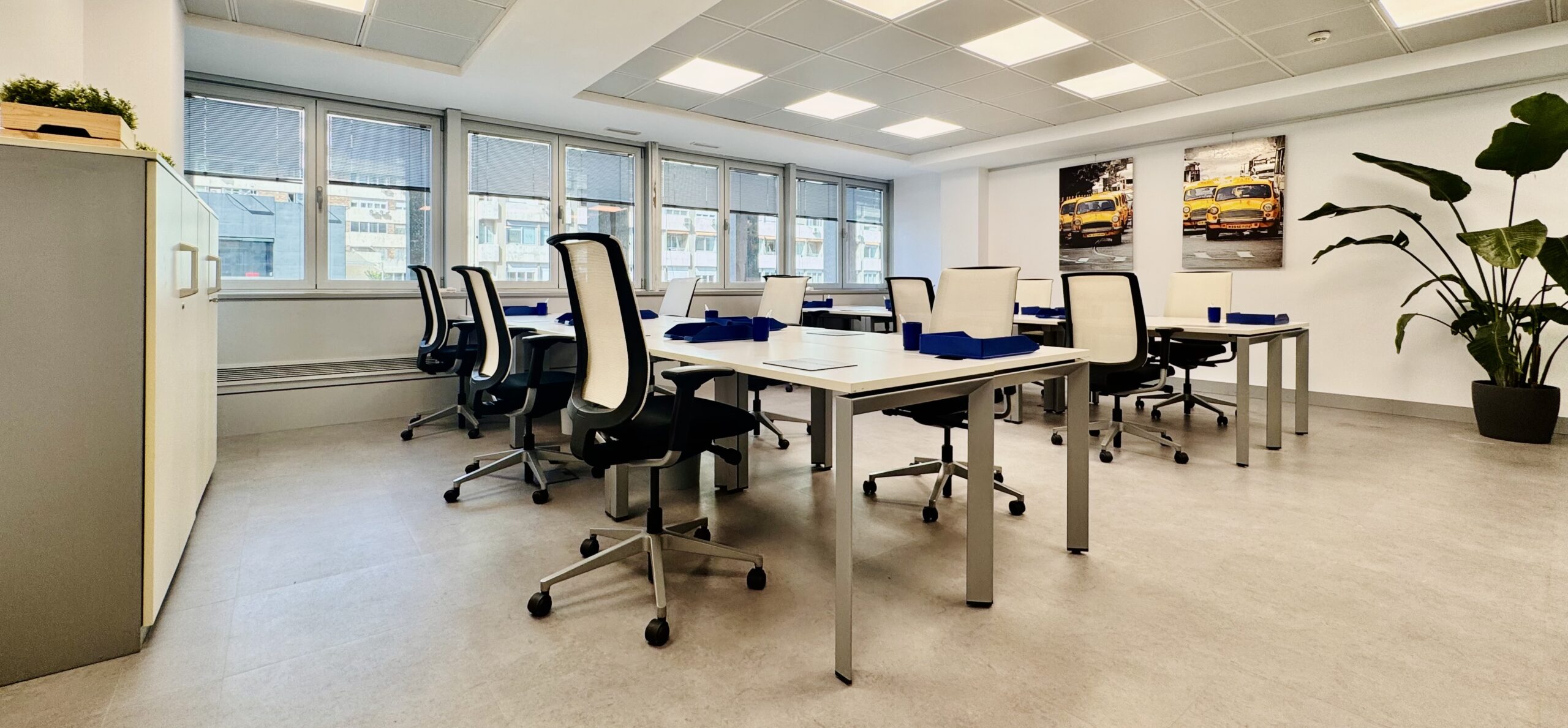When we set out to make effective presentations and find ourselves in front of an audience, whether in a meeting room, training, conference, or even a virtual presentation, we all share a common goal: to capture and hold their attention. We want to convey ideas, concepts or proposals in a clear and persuasive way, and at the same time, ensure that our audience is not only listening, but is engaged and captivated.
To achieve this, you need to go beyond the typical PowerPoint full of text and generic graphics. An effective presentation is not just about what you say, but how you say it, what tools you use and, especially, how you connect with your audience. Here are six key tools that, when used wisely, will help your presentations not only inform, but leave a lasting impression.
1.Prezi: visual storytelling, break the routine
What is it?
Prezi is a non-sequential presentation tool that is distinguished by its ability to create dynamic visual experiences. Unlike traditional slides that advance sequentially, Prezi allows you to zoom in and out of ideas, moving between topics organically, almost as if you were telling an interactive story.
How does it engage your audience?
Dynamic storytelling: By being able to move freely within the structure of the presentation, Prezi allows you to tell stories in a more fluid way. This non-linear navigation capability prevents the audience from losing interest.
Visual movement: The zoom effect adds a level of visual interest that helps to highlight key points and keep the audience engaged.
Customisation of the tour: You can adapt to the questions or interests of the audience, allowing for more interaction.
Helpful tip:
Use Prezi for presentations where you want to break away from the traditional outline and when you are presenting complex ideas that require a more fluid or non-linear approach. However, be careful not to overuse movement or transitions; too much dynamism can be distracting rather than help.
2. Canva: design like a professional (without being one)
What is it?
Canva is an online platform that allows you to create professionally designed presentations easily, even if you have no previous graphic design experience. It offers a large number of pre-designed templates, graphic elements and fonts that you can customise.
How does it engage your audience?
Immediate visual impact: Design matters a lot. A visually appealing presentation generates interest from the first moment and helps the audience stay with you.
Ease of use: Canva allows anyone, even without design skills, to create presentations that look professional, clean and well organised.
Flexible templates: You can adapt templates to different types of presentations, from corporate reports to creative proposals, giving you versatility.
Helpful tip:
Use Canva when you want to maximise the visual impact of your presentations and don’t have much time to design from scratch. Choose templates that complement the tone of your presentation: professional, fun or inspiring. Remember that aesthetics should complement content, not overshadow it.
3. Google Slides: cooperate in real time
What is it?
Google Slides is an online presentation tool that is part of the Google Slides suite. What sets it apart is its ability to collaborate in real time, which means that several users can work on the same presentation simultaneously, from different locations.
How does it engage your audience?
Collaborative working: If you are creating a presentation together with a team, the ability to collaborate in real time makes it easier to integrate ideas and build a more coherent and well-designed message.
Accessibility: Being cloud-based, you can access your presentations from any device connected to the Internet. Plus, you can easily share the file so others can review it or add comments.
Continuous updating: If you need to make last-minute changes, you can do so without worrying about sending out-of-date versions to others.
Helpful tip:
Google Slides is ideal for collaborative projects where you need multiple team members to contribute ideas or content. It’s also great for presentations that require frequent updates. Take advantage of its commenting options to gather feedback without wasting time on endless emails.
4. PowerPoint: the classic with new functions
What is it?
PowerPoint has been the standard presentation tool for decades, but it has evolved considerably. Today, it offers advanced features including animations, transitions, interactive graphics and a range of professional templates.
How does it engage your audience?
Familiarity: Many people are already familiar with PowerPoint, which makes it easy to use. In addition, the audience is also used to seeing it, so they don’t need to adapt to something new.
Advanced features: The latest versions of PowerPoint offer tools that allow you to create more visual and interactive presentations, such as the option to insert videos, 3D graphics and sophisticated animations.
Integration with other Microsoft products: The ease of importing Excel data or graphics from other Office programs makes it a solid choice for business presentations.
Helpful tip:
Use PowerPoint when you need a structured, professional and data-accurate presentation. Animation and transition functions are useful, but should be used sparingly. Instead of filling every slide with text, go for visual minimalism so that the audience is not overwhelmed.
5. Mentimeter: engage your audience in real time
What is it?
Mentimeter is a platform that allows real-time interaction with the audience through polls, open-ended questions, word clouds and quizzes. Participants can respond from their mobile devices, adding a level of active participation in the presentation.
How does it engage your audience?
Interactivity: Allowing the audience to actively participate will keep their attention and make them feel more involved in the topic.
Real-time results: Showing the results of live polls or questions generates dynamism and keeps the presentation fresh.
Adaptability: You can adjust the content of your presentation according to the audience’s responses, making it more relevant and personalised.
Helpful tip:
Use Mentimeter when you want to make highly interactive presentations, whether you want to capture feedback, conduct polls or simply keep your audience engaged and involved. It works especially well in educational contexts, trainings or meetings where active feedback is sought.
6. The Meeting Room: the environment as a presentation tool
Why is it important?
Although we often overlook the environment in which we present, the presentation room can be a key factor for success.
The ambience, room format, seating arrangements, lighting, temperature and even acoustics influence how your audience perceives your message. A good presentation depends not only on the technology you use, but also on the space where you give it.
At Ibercenter we have more than 25 years of experience preparing rooms for meetings, training and events, which is why we know first-hand the importance of having the right space for an effective presentation. At Ibercenter we have a wide range of meeting rooms available for any type of event, from 4 to 100 people.

How does it engage your audience?
Space distribution: A well-organised room allows the audience to feel comfortable and focused on the presentation. Depending on the type of event you are going to hold, you can use one or another set-up, for example, in a school, in a meeting, in a U-shaped room, in a cabaret, among others. Avoid crowding the audience or having the seats too far away from the presenter.
Lighting and temperature: These two factors, although subtle, play a crucial role. A well-lit venue with the right temperature will make the audience feel more comfortable and receptive. A cold or poorly lit space can be distracting and can diminish attention.
Use of space: Walking, moving and using the available space to get closer to the audience allows you to generate more connection. This also prevents you from being perceived as static and distant.
Helpful tip:
Before you start your presentation, make sure you know the space well. If possible, do a sound check and check the layout of the room to optimise it for your needs. Use the environment to your advantage: if you have a projector, make sure the screen is visible from every angle; if it’s a smaller meeting, consider a circular layout to generate more interaction.
Conclusion
For a presentation to be truly effective and captivate your audience, you need more than just good content. Using tools such as Prezi, Canva, Google Slides, PowerPoint or Mentimeter can make all the difference in how you present your message and how it is received. But also, don’t underestimate the importance of the environment: the room in which you present is also a fundamental tool to create the right atmosphere and generate the desired impact, we invite you to schedule a visit to see our variety of rooms and choose the ideal one for your effective presentation.
Remember that every presentation is a unique opportunity to communicate, persuade and connect.
Make your next presentation memorable by using the right tools and space!






